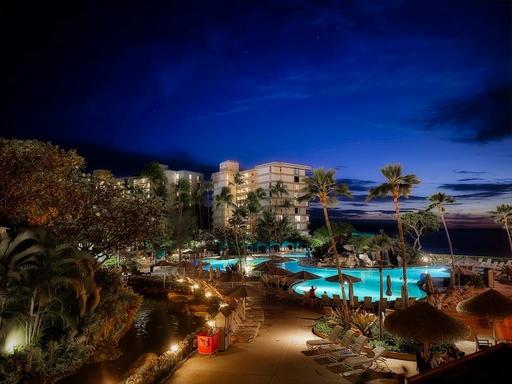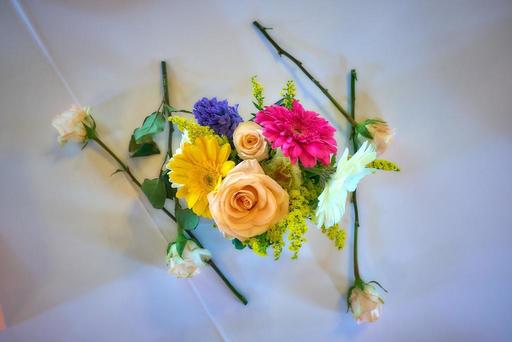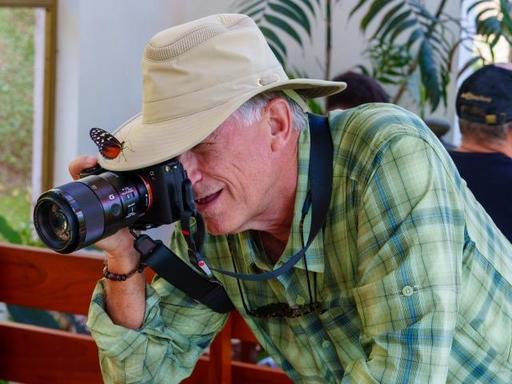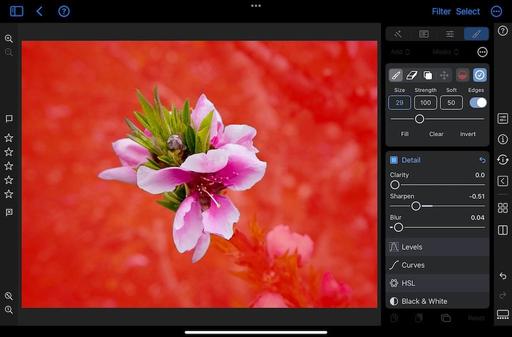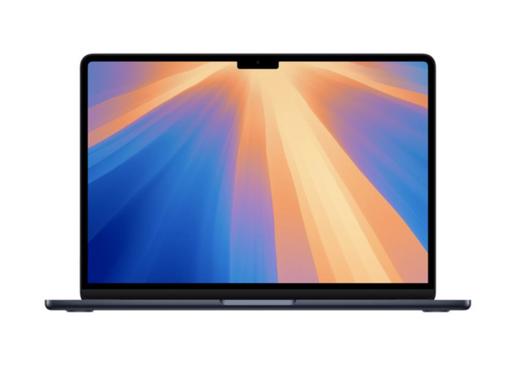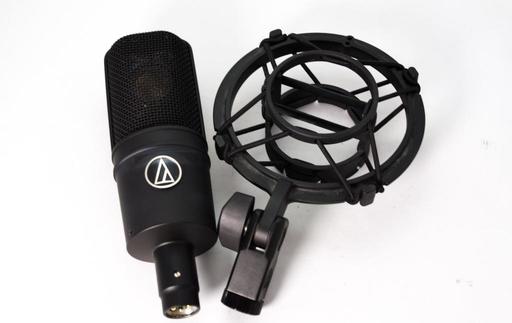This is The Digital Story Podcast #996, April 22, 2025. Today's theme is, "Night and Twilight Photography." I'm Derrick Story.
Opening Monologue
Daylight is great. The bulk of my photography happens when the sun is shining. That's also true for everyone else, however. So when I want to create something that's unique, and eye-catching, I wait for the sun to dip below the horizon. That's when the drama begins. I share some of my favorite tips for night and twilight photography on this week's TDS Photography Podcast. I hope you enjoy the show.
Tune-In Via Your Favorite Podcast App!
Apple Podcasts -- Spotify Podcasts -- Stitcher
Podbean Podcasts -- Podbay FM -- Tune In
Night and Twilight Photography
For night photography I use both my iPhone 15 Pro Max and the OM System OM-3. All smartphones these days have a variety of night modes that are effective. So in that sense, brand doesn't matter much.
Night Photography with the iPhone
The iPhone will detect with the ambient light is low enough to require Night Mode, and will let you know its status in the upper left hand corner. As smart as the device is, you still want to hold the camera very steady during exposure. I often lean against a wall, use a hand railing, etc. to ensure the best quality possible.
Once you have the capture, there are two common issues to address. The first is color. Night photography often involves mixed lighting situations that can yield some very garish results. I like to harmonize those colors using Selective Color in the Photos App or HSL in other editors.
You can shift hues, brighten and darken colors, and tweak their saturation to harmonize your color palette.
I've also found that LUTs are very useful for taming difficult color challenges. Many apps such as RAW Power, Nitro, Photomator, ON1 Effects, and Luminar support LUTs and include a good variety with the software.
The next thing I often address is what I call digital over sharpening. I think this is a result of the computational photography required to get the exposure in the first place.
One of my favorite tools to combat digital over sharpening is the Orton Effect tool in Luminar Neo. Go to Edit > Glow, then choose Orton Effect in the submenu. Be sure to turn on Advance Settings to control softness, brightness, and warmth of the effect.
Aside from being a terrific standalone app, Luminar is a powerful editing extension for Photos as well.
The Orton Effect does a great job of counteracting digital over sharpening giving your night shots that magical look.
Twilight Photography
My favorite post-sunset shots are often while there's still color in the sky. I like the oranges and blues. And a great technique this time of evening is to work with silhouettes.
For example, if you're in a popular place where folks are photographing the sunsets, such as Hawaii, step back from the crowd and get the people, trees, and other objects silhouetted against the colorful sky. It's often a far more interesting picture.
Combining Live Photo and Night Mode
This is a great technique if you have water in the scene. I combine Night Mode with Live View Long Exposure. Make sure Live View is turned on in the Camera App for the iPhone, then in Photos, choose Long Exposure from the Live menu.
The effect can be quite impressive, especially considering that this is a handheld long exposure at night. Then apply the color correcting techniques I discussed earlier, plus a little Orton Effect, and you'll have a real winner.
Live Composite on Olympus Cameras
Live Composite is a high-tech version of Bulb mode, where the shutter stays open for an extended period of time, but you can watch the picture unfold before your eyes on the camera's LCD screen.
This is particularly nice when you have moving lights in the scene. Begin by setting the camera to Bulb Mode. Then you can navigate to Live Composite. On the OM-3 you use the rear dial.
Make sure the camera is steady, set your parameters, and watch the magic appear.
Final Thoughts
As much as I like the people and daytime landscape shots from Maui, I'm also loving the magic the twilight and night shots bring to the library.
Camera Industry News
Japan's 2025 CP+ Camera Show Got Even Bigger on PetaPixel.com.
Two of the best-looking cameras ever made take home trophies at TIPA World Awards on DigitalCameraWorld.com.
Virtual Camera Club News
TDS Photography Workshops! Reserve your spot now. We have an exciting slate of online and in-person events. If you have any questions, use the Nimble Photographer Contact Form. I will get back to you ASAP.
New Workshop!: Route 66 Photography Workshop led by Rob Knight, starting on Oct. 16, 2025.
Join pro photographer and Route 66 explorer Rob Knight to explore the "mother road" this October. We will be based in Winslow and Kingman, Arizona, putting us right in the middle of the action. The stretch of Route 66 through northern Arizona contains many of the most iconic spots that still exist from the heyday of American car culture. We will visit towns along Route 66 like Seligman, Oatman, and Williams, Arizona. Along the way, we will explore and photograph the roadside attractions that made Route 66 so legendary.
New Workshop!: Sony Creative Master Class led by Rob Knight, starting on May 8th, 2025.
This all-new class is designed to help you make the most of your Sony camera. We will dive in to the features, custom functions, menus, and MORE. Each online class will include presentations and tutorials based on years of professional photography experience using various Sony cameras and lenses, PLUS plenty of time for your questions about the system.
Workshop Updates!
Creative Camera Techniques led by Derrick Story, starting on June 5, 2025.
In addition to the full slate of goodies I have planned for iPhone photographers, Fuji cameras, Nikons, and more, I'm adding creative techniques for the new OM System OM-3. Photographers will be able to pick and choose techniques based on the camera system they shoot with.
Sonoma County Autumn Adventure Workshop, led by Derrick Story, starting on Nov. 4, 2025.
We will be returning to Safari West African Wildlife preserve, and visiting the world famous Coppola Vineyard, home of amazing wines, rolling vineyards, Academy Awards, an authentic Tucker car, and more.
You can reserve your place of each of these events by visiting our Workshops Page.
Schedule a My TDS Moment Recording Session
If you want to participate in our 1,000th Podcast Celebration, here's how it's going to work. I've set up a Meeting Calendar for Friday appointments. If there's an open slot, you can sign up for it. On that date, we will connect via Zoom and I will record your TDS Moment. I hope you can join us in the festivities!
The Nimble Photographer Newsletter is now publishing every Thursday. Readers will enjoy a variety of content spanning from short photo essays, to commentary on weekly events, to reviews of the latest and coolest photo gear.
Inner Circle Members: A big thanks to those who support our podcast and our efforts! We are having a blast at our new Inner Circle hangout, the private group I've set up at DerrickStoryOnline. We'd love it if you join us. You can become an Inner Circle Member by signing up at our Patreon site. You will automatically be added to the new hangout.
Great Photography Articles on Live View - If you check out our publication and appreciate what you see, be sure to follow us and clap for those authors. You can find us at medium.com/live-view.
If you're interested in writing for Live View, drop me a line at dstory@gmail.com.
The New Donation Kit for Carefree Shipping of Found Film Cameras - If you've discovered a film camera that's no longer being used, our new Donation Kit makes it easy to pack and ship. Just visit the Contact Form on thenimblephotographer.com, click the box next to Donating a Film Camera, and let me know what you have. In your note, be sure to include your shipping address.
Affiliate Links - The links to some products in this podcast contain an affiliate code that credits The Digital Story for any purchases made from B&H Photo and Amazon via that click-through. Depending on the purchase, we may receive some financial compensation.
Red River Paper - And finally, be sure to visit our friends at Red River Paper for all of your inkjet supply needs.
See you next week!
You can share your thoughts at the TDS Facebook page, where I'll post this story for discussion.
